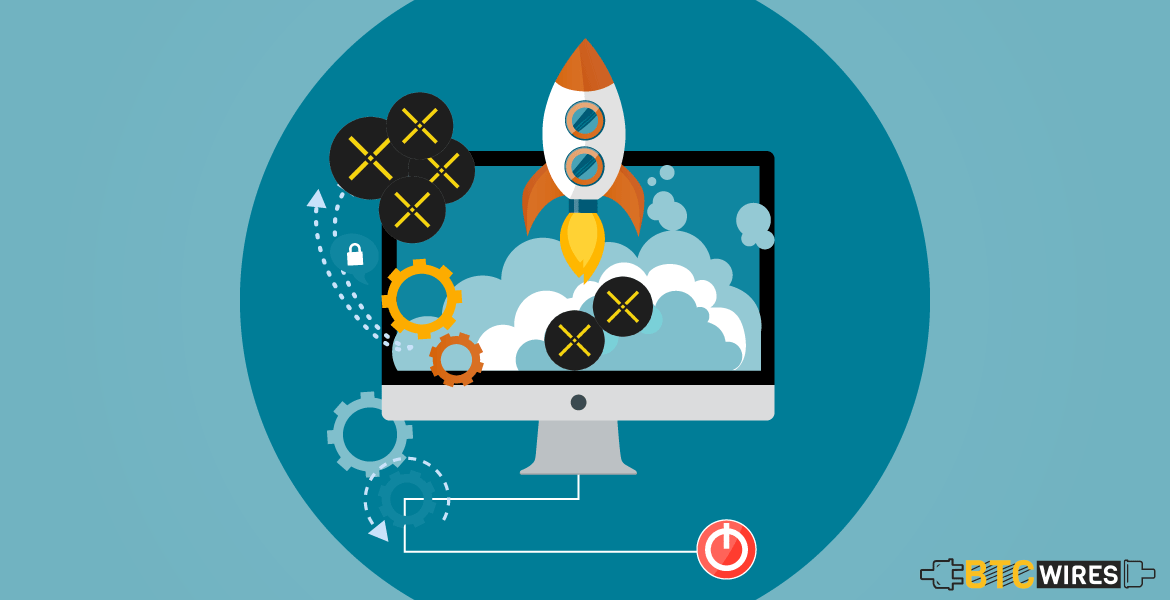Since Blockchain came into existence, the world of cryptocurrency has

Since Blockchain came into existence, the world of cryptocurrency has exploded. Now that blockchain is ushering the fourth revolution, its use cases are expanding. With an estimated 1000 cryptocurrencies currently active, it is evident that people are still skeptical about giving fiat money up in return for cryptocurrencies. A big hurdle in widespread cryptocurrency adoption is thus, to establish trust in the currencies in the first place – people won’t use them if retailers won’t accept payments in crypto.
A new player in Blockchain solutions, Pundi X aims to eradicate the issue by allowing retailers to accept payments in digital currencies with the help of PoS style devices that work similarly to ATMs.
In this beginner’s guide, we discuss what Pundi X is, what it does, how it works, its proprietary token and if it’s worth a try.
You May Also Read: 5 Things You Should Know About Blockchain
What is Pundi X?
Pundi X is a Blockchain solution that aims primarily at producing Physical Point-of-Sale (PoS) devices that can be used by retailers to accept payments in digital currencies.
Incorporating inventory, membership and identity features into its system, the devices will be able to accept payments from retailers in their proprietary cryptocurrency, NPXS. The company launched in January 2018 and is planning to roll out hundreds if not thousands of PoS smart devices to retailers in an attempt to ease the transition to digital currencies on a larger scale.
Pundi X claims that the devices would be much more accessible than already exiting Bitcoin ATMs as they will be smaller and thus more portable while also providing the benefit of low transaction costs.
You May Also Read: 5 Sites To Buy Bitcoin With Debit Card
How does Pundi X work?
undi X’s PoS devices have been linked with two Blockchains – Ethereum and NEM via two layers of communication called Xplugins. These devices are then sent to retailers, allowing them to install them into other PoS systems such as Card Readers and mobile wallet NFC scanners. While there are differences between Ethereum blockchain and Bitcoin blockchain, Ethereum is usually the preferred one for hosting enterprise chains and a bunch of different use cases.
The platform also provides their users with a mobile wallet for storing their public and private keys and securing them with a password system. The wallet will be able to support a selection of cryptocurrencies, including fiat money.
There are XPASS cards connected to the mobile wallet that allows the users to deposit and withdraw tokens from their wallets. The cards have already seen limited use throughout tech conventions in East Asia in early 2018.
What is the Pundi X token?
The Pundi X token, also called NPXS is the company’s native token that allows retailers to accept payments in the form of digital currencies through the smart PoS devices.
During its ICO in late 2017, the token (then under the ticker PXS) managed to raise $35 million. In mid-2018, the ticker was changed to NPXS and the users were able to swap out PXS tokens for NPXS at an exchange ratio of 1000:1. The total supply is said to be around 280 billion.
Multiple exchanges including Binance, Gate.io and Bit-Z have the option to trade NPXS. They can be bought even through fiat currencies like the US Dollar or the INR.
How reliable is NPXS for investing?
Although having a fair amount of advantages under its belt, the token isn’t without its risks. The price has been erratic with a drop of around 90% happening after May 2018. But to look on the bright side, the token will only increase in price as the demand increases as more Proof of Stake devices come into circulation and more retailers start using it. But as of now, the retail industry has largely been skeptical about the system, mainly due to the token’s volatile price.
Although ambitious, the efforts made by the company may not be enough to win over retailers who are comfortable using fiat money. As it stands now, the success of the project largely depends on how quickly the devices can be produced and rolled out and how wide the distribution network runs.
Here Are A Few Other Articles For You To Read:

